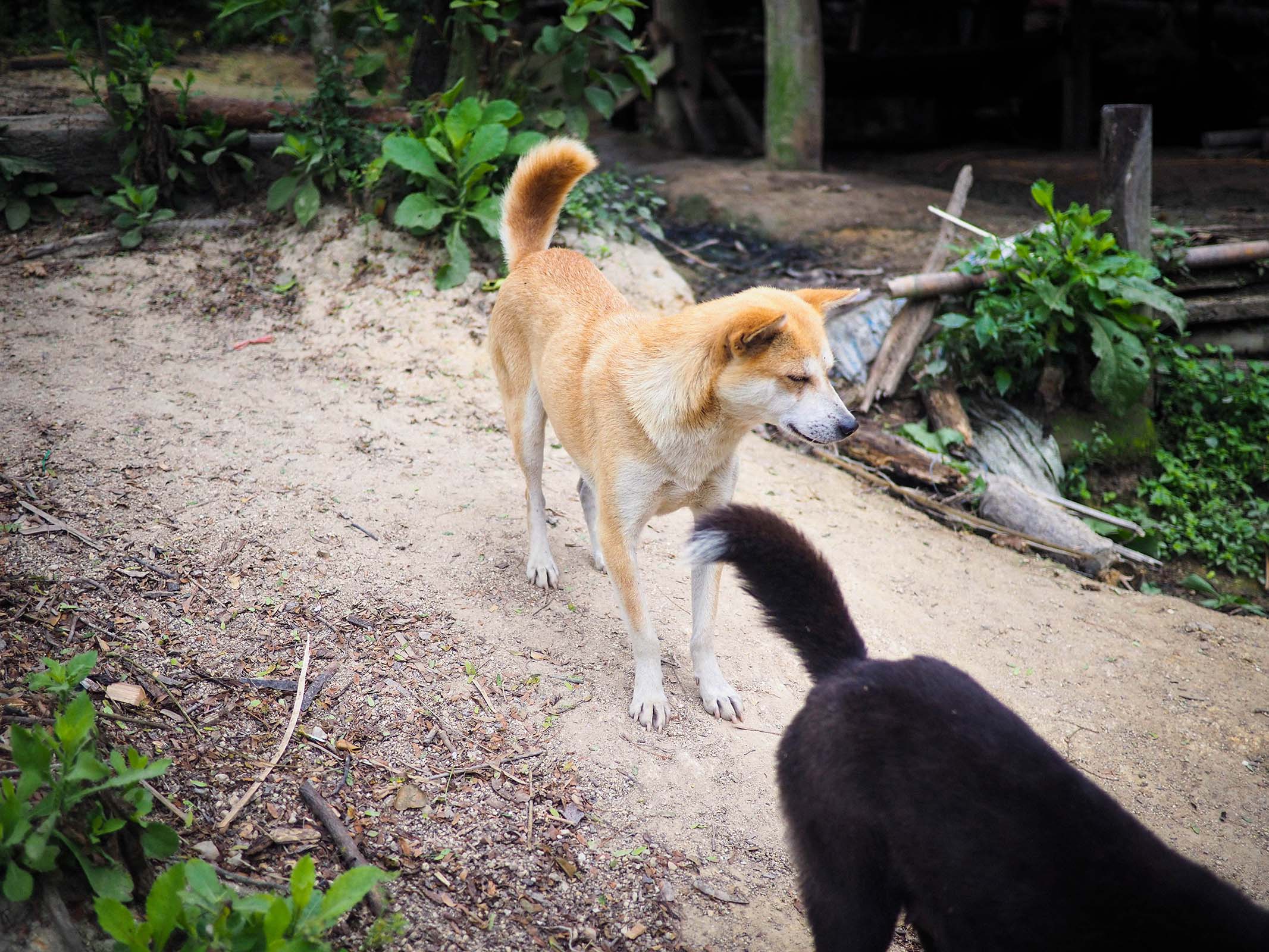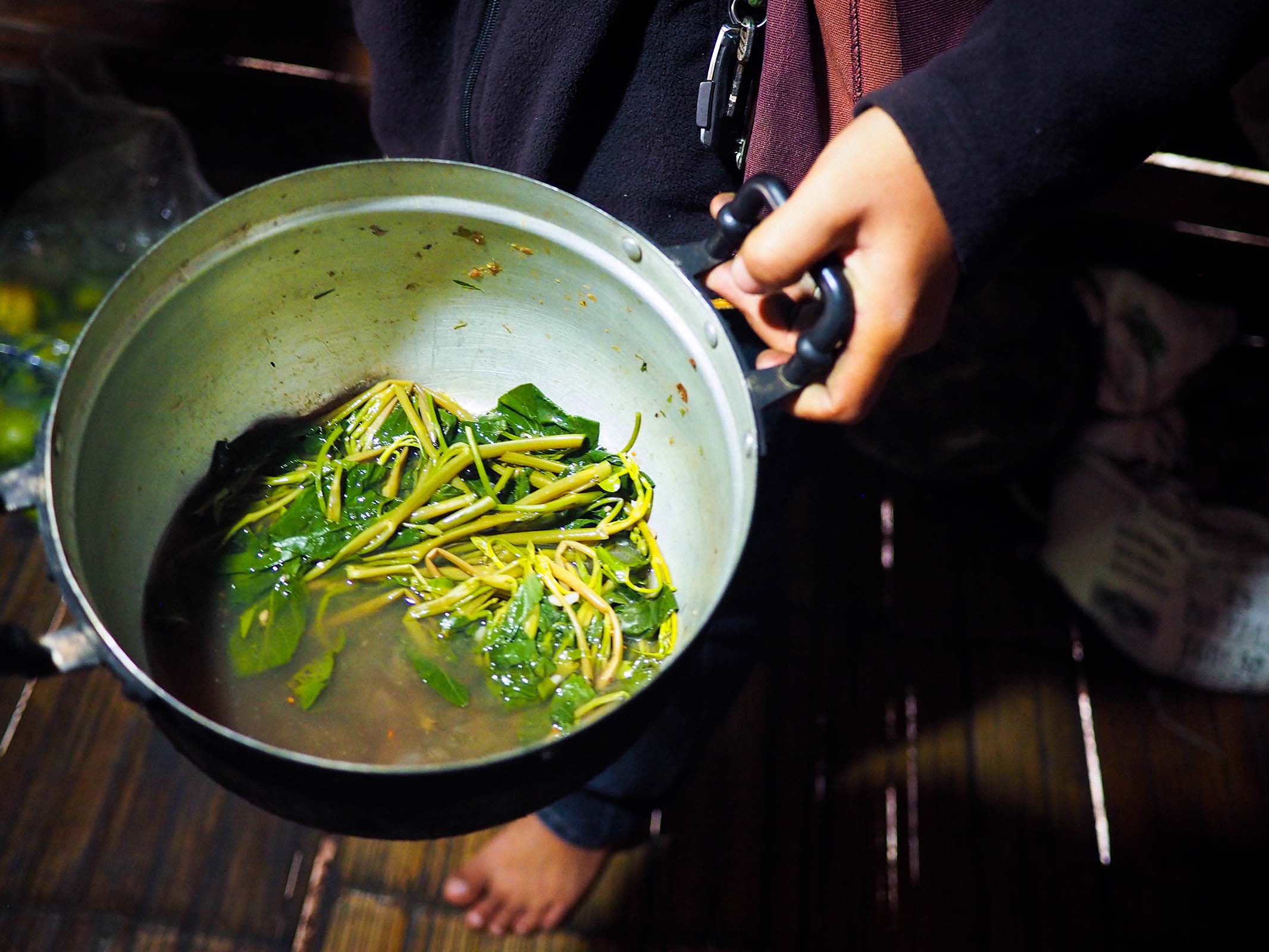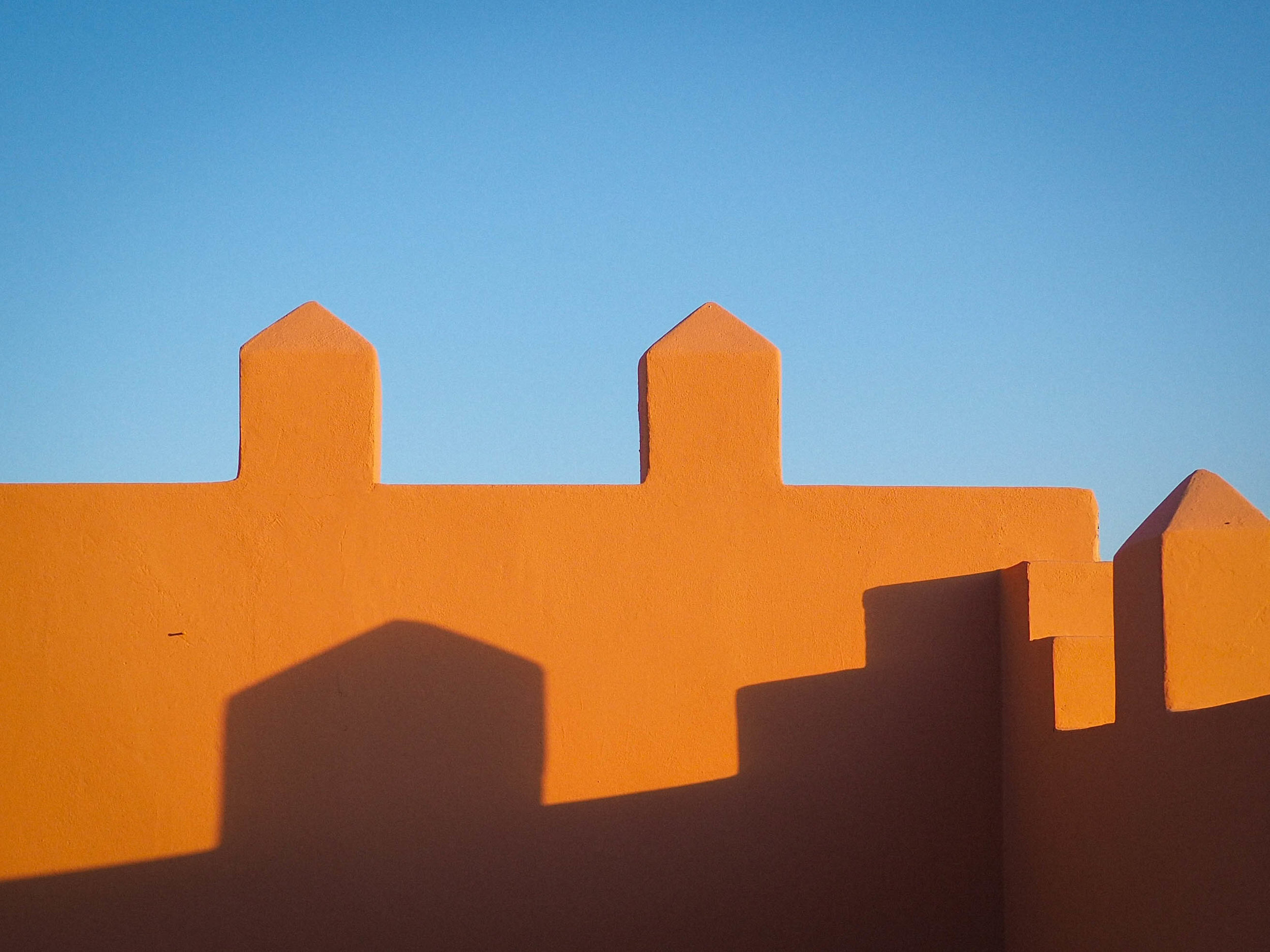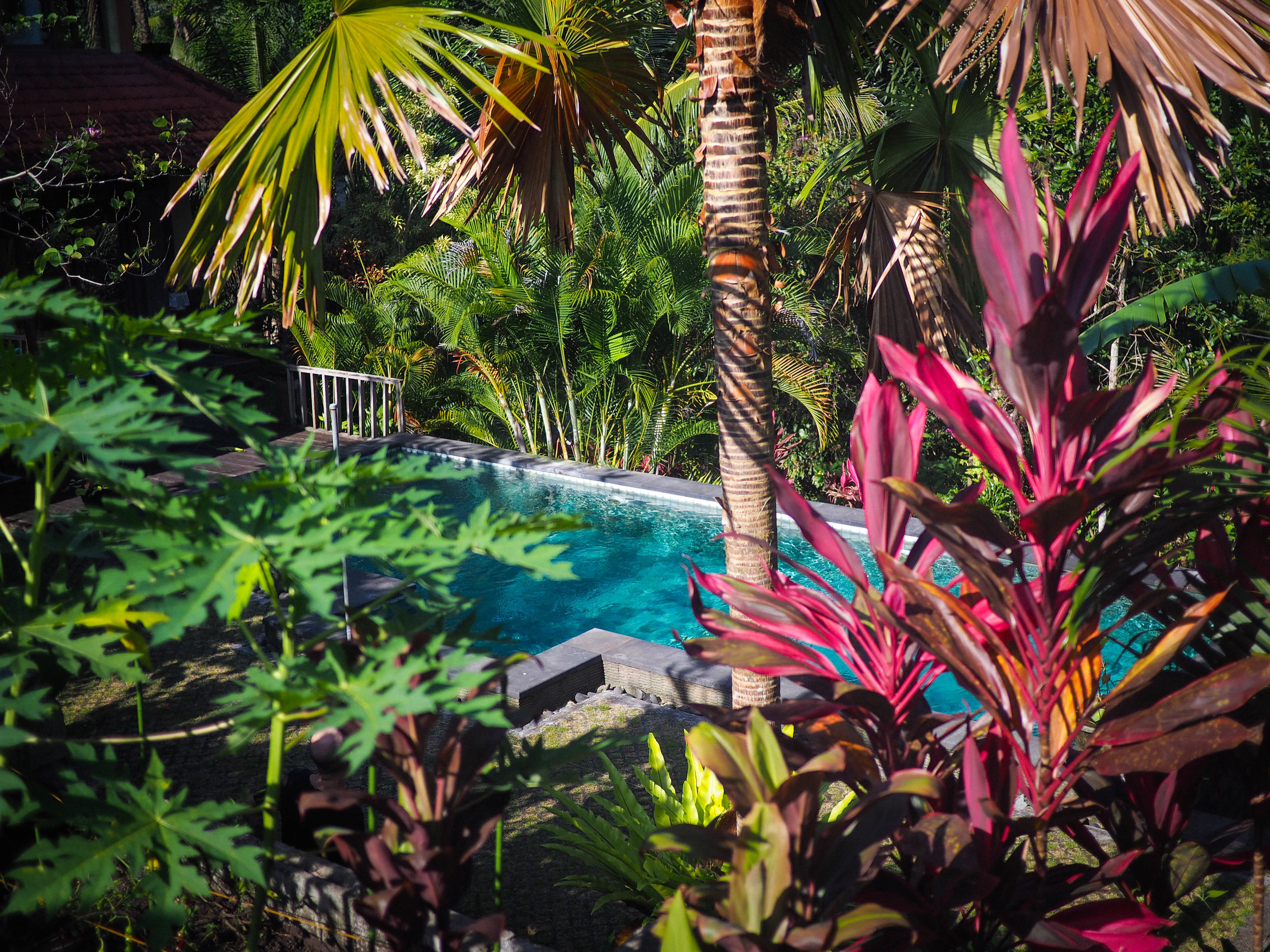Mae Hong Son Province

We arranged a trip with Sak, a friendly and talkative Karen guide. The Karen are one of a few Myanmar refugee tribes that created settlements in the hills of Mae Hong Son in northern Thailand.
Sak brought to a Karen village. The tribe was intrigued by our visit as tourists aren’t very common to this area and can only arrive with a local guide. We walked to the rice fields and stumbled on two women gossiping. They wanted to know how old we were. What do we eat to make our complexion so fair. Do we have babies? Why don’t we have babies yet? They asked Sak why he only brought two people to visit today. We exchanged questions back and forth, realizing they were as interested to learn about us as we were to learn about them.
Another family welcomed us in for a meal. They had caught a squirrel just a day earlier and were excited to share it with us. It was some of the most delicious and most meaningful meals we’ve had. Squirrel and black bean soup, a green chili and rice porridge with small meaty bones (we’re not sure from what animal), pickled morning glory, sticky rice with salty, tangy chili paste, sweet, sweet tangerines with dirty green skin and blindingly orange pulp. They had very little, but all that was there they wanted to us to experience. We mimed to each other, having full conversations without ever saying a word in the same language.
You can never say no to Thai moonshine, poured fresh from a water bottle pulled off a bamboo shelf. It actually was pretty good.
They just got electricity this year. They proudly showed off their new appliances, a radio, and an energy efficient lightbulb.
We help pick tea leaves that would later be soaked and fermented for a bitter snack later. They laughed as I clumsily struggled to climb the steep muddy hill.
We call them the Long Neck Karen, but their real name is Padaung. Sak, our guide from another Karen tribe, told us the story his grandfather told him about the origin of the gold rings worn around the necks of the Padaung.
According to most popular accounts the gold rings represent beauty. The more gold rings, the more beautiful you are. But this is a false tale. It’s a softer tale that younger generations in Mae Hong Son share as to not scare their daughters into making the decision to wear the rings.
The real tale is much darker. According to Sak’s grandfather, Myanmar’s government was invading the Padaung land, forcing the young boys and men to become Muay Thai fighters and raping the young girls and women. A man from the tribe prayed very hard and in return received a message from his god—wrap your daughter’s neck in a gold coil and I will promise to protect her. Night fell and the soldiers came to the man’s house to rape his daughter. She was hiding in the corner under a blanket. When the soldiers ripped the blanket off of her, they saw she had vipers wrapped around her neck. They rubbed their eyes in disbelief. To their eyes the gold coils appeared as deadly, hissing vipers. Scared, the men left the man’s house and didn’t rape his daughter.
I think it's important to share the story as it was told to me. It may be inaccurate. It may be biased. It may sound crazy. But it was important for Sak to share it this way. So this is the way I also wanted to share it.
When he shared it with us, it was a very special and tender moment. While to us this story sounds whimsical and impossible, to him it was very true. His people have endured so much pain and difficulty in their lives, and their religion has led them to a new land and a new life. Things aren’t east for them now, but they are a far stretch from where they once were.
You spend so much time with your guide that a bond forms. We share stories back and forth for hours. We learned of his and the region’s struggle with opium. He asked us about Trump, he asked what the White House is, he wanted to know when we were going to have kids. Do we rent an apartment or own a home? How many rooms does it have?
We bounced to the top of a mountain, on the steepest and bumpiest road I’ve ever been on. We spent the day walking around a Hmong tribe neighborhood. They originated in Mongolia, then settled in Vietnam, only to later migrate to northern Thailand due to political unrest and war.
Sak walked us around and point out which homes were built by families who prosper from opium sales (spoiler alert: the ones built in concrete). The other homes are cobbled together from various materials. Mostly wood, metal corrugate, cinderblock, and vinyl. We sat with an old woman, smoking cigarettes-hunched over a pot on the fire, who complained her children never visit her. We sat on handmade benches with another family, outside their home. One women stitched neon pink thread into a strip of black fabric, in preparation for a new dress for their new year celebration. Before we left, they gave us a give of a very large bunch of small bananas as a thank you for visiting their home.
I’m in shock by the warmth of the people we’ve met. Could you imagine if a random couple off the street came and sat on your stoop with you? Smiling at them? Asking them questions about their lives? Asking if they’re enjoying your home? Giving them gifts from dropping in unannounced? This is the kindness that comes so natural to them and we’re so fortunate to have been on the receiving end of it.

















































































